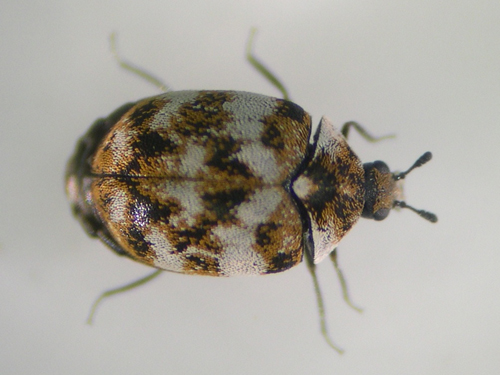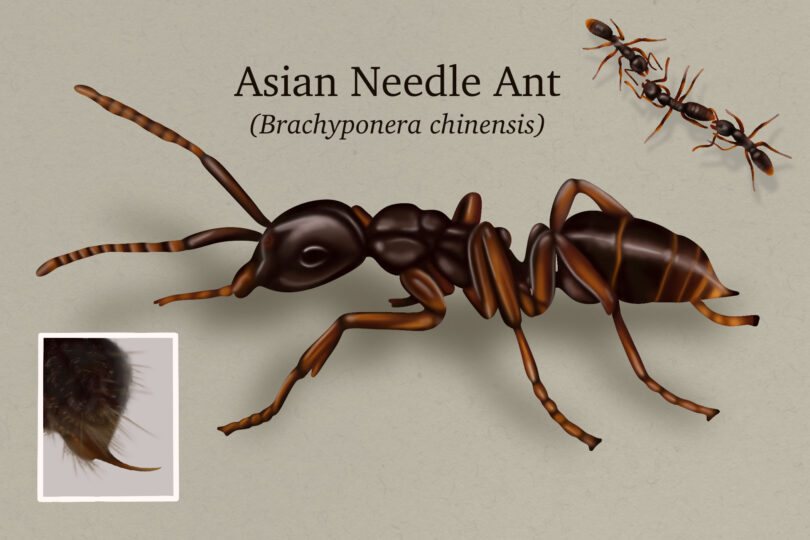Winter has arrived. As people pull out their wool sweaters, they may be disappointed to find a few holes in their frosty frocks. A University of Georgia expert says it isn’t moths eating their way through the clothes.
“Carpet beetles are eating the wool, and they are everywhere,” says UGA entomologist Nancy Hinkle. “Carpet beetles are one of the few animals in the world that can digest keratin, the main component of hair.”
Unraveling sweaters
Hinkle said the insects take small bites out of woolen sweaters, coats and socks. Sometimes the garments aren’t affected at all, but often the small bites start the process of unraveling.
“They don’t usually dine on an entire sweater,” she said.
Carpet beetles are common pests in Georgia. Hinkle hasn’t spent a week at UGA without seeing a sample of a carpet beetle submitted through UGA Cooperative Extension.
“One Atlanta couple installed wool carpet throughout their home; and in a few months, they noticed it was being eaten by carpet beetles, thousands of them,” she said.
The beetles are an eight of an inch long and can be black or have a variety of colors and patterns on their backs. The larvae are very hairy and have tan and white stripes. They are the most likely wool eaters.
“Although it is possible to see the beetles, we most often see larvae brought in as specimens,” Hinkle said. “The eggs are small and hard to spot, and the cocoons are rarely noticed as they blend in with the fabric.”
They can be a food pest as well. Carpet beetles prefer pastas, cereals and nuts. They will also feed on improperly treated taxidermy specimens and unfinished animal skins.
“Good sanitation and vacuuming up shed human and pet hair will reduce populations indoors,” she said.
While it is probably too late to protect sweaters for this winter, Hinkle says to package clean sweaters and other woolen goods in airtight containers when you retire them this spring.
“The beetles prefer dirty sweaters with body oils, sweat stains or food spills on them, so be sure to have them cleaned before packing them away,” she said.
Lady beetles
Another beetle that invades homes in the winter are Asian lady beetles. Commonly called ladybugs, the beetles come inside to stay warm.
They are often found lining windowsills or around doorways.
“They are not dead, but dormant,” Hinkle said. “They maintain a low-level of activity to survive the winter. They are not mating, not eating or drinking.”
Hinkle suggests moving them outdoors by vacuuming them up and releasing them far from the house or sweeping them into a paper bag and storing them in a garage or basement until spring. Once the weather warms up, the beetles will feed on the aphids that destroy roses and other garden plants.
“Don’t crush them,” Hinkle warns. “They release an orange hemolymph, which is reflexive bleeding. It is a defense mechanism that can stain walls and furniture.”
Keeping beetles out
Because of their small size, beetles are difficult to keep out of homes. They crawl and squeeze in through improperly sealed windows and doors.
A tightly sealed house will have fewer beetles. Seal around pipes, wire penetrations, doors and windows.
Remember, adult beetles fly, so they can still find their way inside through open doors.









